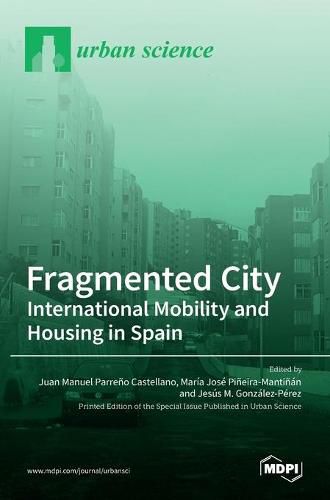Readings Newsletter
Become a Readings Member to make your shopping experience even easier.
Sign in or sign up for free!
You’re not far away from qualifying for FREE standard shipping within Australia
You’ve qualified for FREE standard shipping within Australia
The cart is loading…






This title is printed to order. This book may have been self-published. If so, we cannot guarantee the quality of the content. In the main most books will have gone through the editing process however some may not. We therefore suggest that you be aware of this before ordering this book. If in doubt check either the author or publisher’s details as we are unable to accept any returns unless they are faulty. Please contact us if you have any questions.
Habitual statements in academic and journalistic fields on the growing inequality of our cities call for multiple reflections. There are numerous indicators of inequality, and territorial specificities give rise to important and subtle differences. What is less debatable is the spatial expansion of inequality (from more outlying, poorer countries to the most developed ones) and its generalization on all scales (from rural to urban areas, and from large metropolises to small cities). Mobility and housing lie at the root of many of these processes, which are represented by phenomena that are often interconnected, such as gentrification and the elite social classes; impoverishment and immigrants in search of work; and segregation and refugees; among many others. In this book, we try to offer a Spanish-based vision of what we call urban geographies in transition-that is, urban geographies in which the key stages, for the purpose of analysis, are the real estate bubble (1996-2007), the subsequent crisis (2008-2013), and the ensuing recovery (2014-2020), without overlooking the impact of the current COVID-19 crisis on the configuration of a new spatial order in cities.
$9.00 standard shipping within Australia
FREE standard shipping within Australia for orders over $100.00
Express & International shipping calculated at checkout
This title is printed to order. This book may have been self-published. If so, we cannot guarantee the quality of the content. In the main most books will have gone through the editing process however some may not. We therefore suggest that you be aware of this before ordering this book. If in doubt check either the author or publisher’s details as we are unable to accept any returns unless they are faulty. Please contact us if you have any questions.
Habitual statements in academic and journalistic fields on the growing inequality of our cities call for multiple reflections. There are numerous indicators of inequality, and territorial specificities give rise to important and subtle differences. What is less debatable is the spatial expansion of inequality (from more outlying, poorer countries to the most developed ones) and its generalization on all scales (from rural to urban areas, and from large metropolises to small cities). Mobility and housing lie at the root of many of these processes, which are represented by phenomena that are often interconnected, such as gentrification and the elite social classes; impoverishment and immigrants in search of work; and segregation and refugees; among many others. In this book, we try to offer a Spanish-based vision of what we call urban geographies in transition-that is, urban geographies in which the key stages, for the purpose of analysis, are the real estate bubble (1996-2007), the subsequent crisis (2008-2013), and the ensuing recovery (2014-2020), without overlooking the impact of the current COVID-19 crisis on the configuration of a new spatial order in cities.